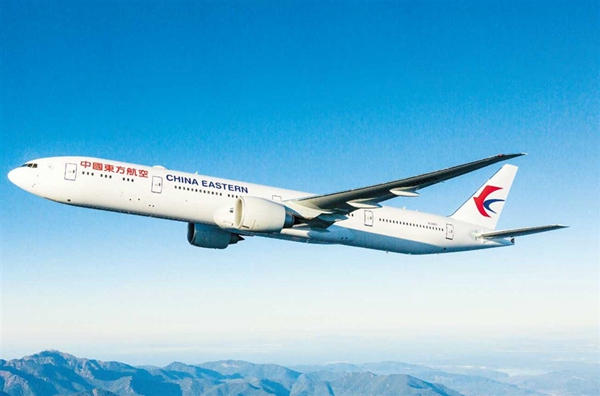
China Eastern Airlines, which operates 131
international routes to 45 cities in 21 countries located along the Belt
and Road, plans to create an “Aerial Silk Road” to facilitate the
nation’s initiative and help the carrier expand its global network.
The flight capacity on the Belt and Road nations has increased by 45 percent for the past three years, the airline said.
Proposed in 2013, the Belt and Road initiative is a grand plan to connect Asia with Europe and Africa along, and beyond, ancient trade routes by putting in place an unparalleled trade and infrastructure network. The project calls for expanding trade across Asia, Africa and Europe by investing in ports, railways and other facilities.
China Eastern aims to form an Aerial Silk Road, said Liu Shaoyong, president and Party secretary of the China Eastern Airlines Group. The carrier will not only enhance the transport capacity but also develop supporting industries overseas including aircraft manufacturing, aviation hub, maintenance and finance, Liu added.
Ma Xulun, the airline’s general manager, said the carrier plans to open routes to all the nations along the Belt and Road.
In June 2016, the airline opened four international routes within 8 days from Shanghai to St Petersburg, Prague, Amsterdam and Madrid to expand the European market.
Since it started flying on June 23, 2016, from Shanghai to Prague, the route has an average load factor of over 80 percent, the airline said.
Besides Shanghai, the airline has also developed Xi’an in Shaanxi Province as a new hub for the Aerial Silk Road. The northwestern city once served as the starting point of the ancient Silk Road.
The airline’s northwest branch also flies to Sydney and Moscow using the Airbus 330 wide-body aircraft. It plans to open new routes this year between Xi’an and St Petersburg, Irkutsk, Prague, Vancouver and Saipan to help cement Xi’an as a starting point again for the new Silk Road in the air, China Eastern Northwest Co said.
Other regional transport hubs for the Belt and Road initiative include Kunming in Yunnan Province and Fuzhou in Fujian Province.
The carrier has trained a batch of foreign crew members from Japan, South Korea, France, Germany and Italy to serve passengers along the routes.
China Eastern has operated an average of 63,000 passengers’ seats daily in 2016 on international routes, up 45 percent from that of 2013. The capacity for flights to European, Australian and US destinations has increased by 87 percent from 2013. The Southeast Asia capacity has taken off by 40 percent, according to the carrier.
To facilitate the expanding network, the airline has retired over 100 passenger aircraft and purchased new planes, making the average age of the fleet around five years, younger than most fleets of international carriers.
The airline has also invested heavily to expand the cargo transport network to implement the Belt and Road initiative.
A global cargo transport network has been established with Shanghai serving as the core hub with Tianjin, Zhengzhou in Henan Province, Xi’an, and Ningbo in Shanghai’s neighboring Zhejiang Province, becoming supportive hubs, the carrier said.
China Eastern has also inked several agreements for international cooperation to give the Belt and Road initiative a huge boost. Delta, the world’s third-biggest carrier, said in September 2016 that it would buy 465.91 million Hong Kong-listed shares of China Eastern. The cooperation has helped the Shanghai-based airline to further expand in Oceania and America.
China Eastern has also collaborated with Ctrip, China’s top online travel agency, in selling air tickets and operating a budget carrier.
China Eastern is a partner with the Shanghai Disney Resort.
